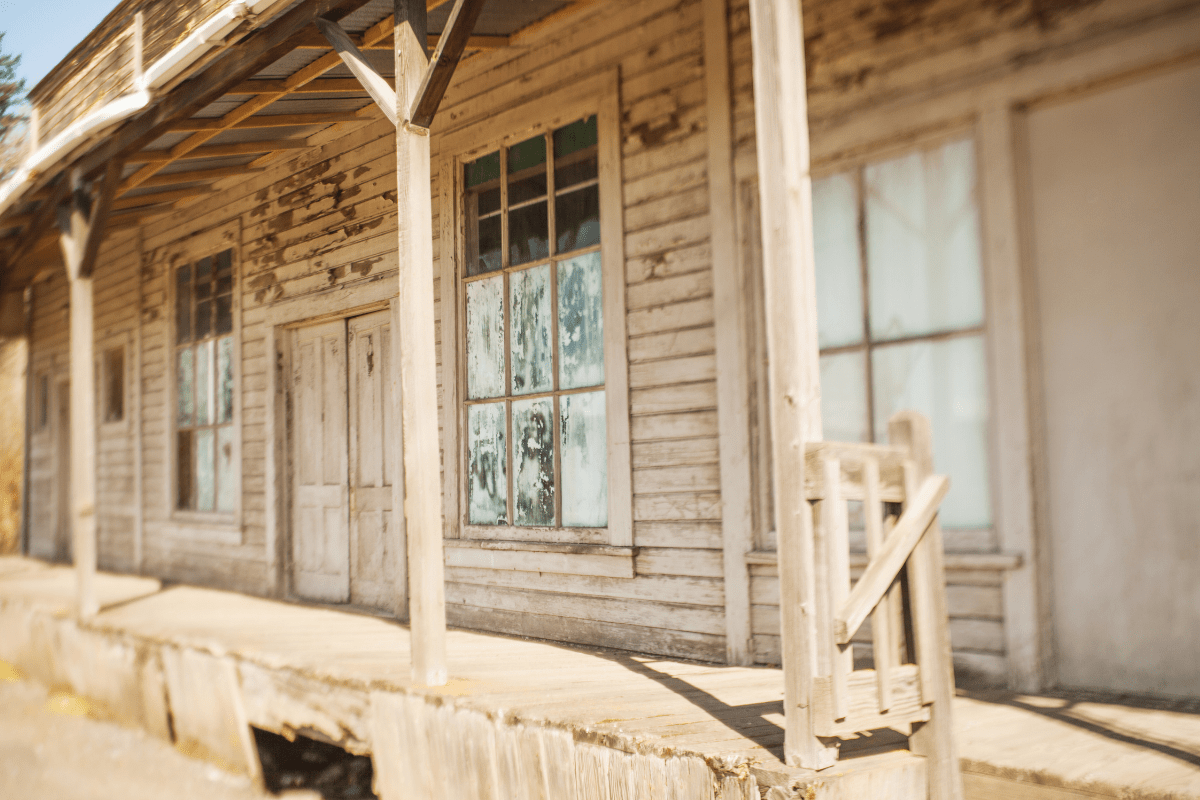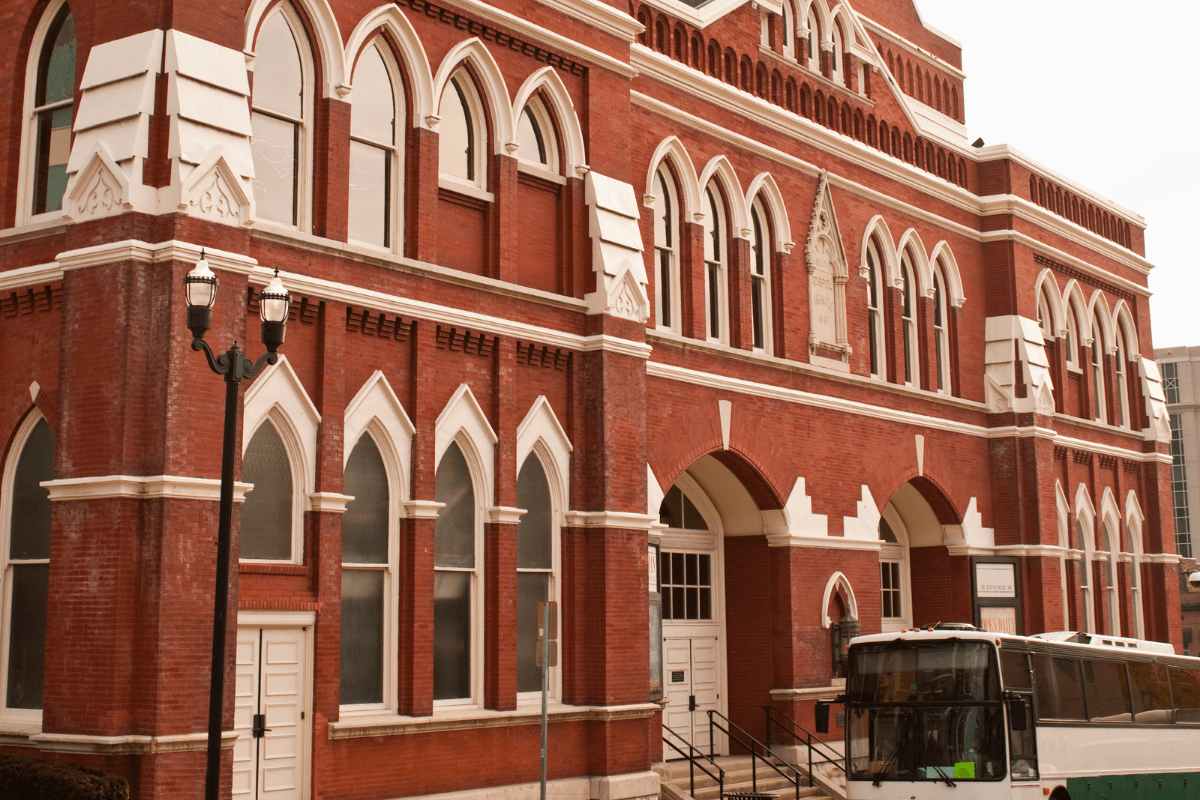Tennessee harbors over 100 ghost towns scattered across its mountains and valleys, though only about 18 are officially documented. These abandoned settlements tell stories that range from millionaire mountain retreats to mining disasters that changed labor laws forever. Whether you're a history buff, photographer, or just someone who thinks abandoned places are cool, Tennessee's ghost towns offer legally accessible windows into forgotten worlds.
The heavy hitters: Ghost towns you can actually visit
Let's start with the good stuff… the ghost towns you can explore without bushwhacking through poison ivy or accidentally trespassing on someone's property.
Elkmont: Where millionaires went to rough it
Elkmont is basically the Beyoncé of Tennessee ghost towns. Located just 8 miles from Gatlinburg on a nicely paved road (thank goodness), this former logging town turned exclusive resort draws thousands of visitors annually to its collection of preserved structures in Great Smoky Mountains National Park.
The town's story reads like a Tennessee soap opera. Founded in 1908 by the Little River Lumber Company, Elkmont housed over 1,500 residents at its peak in 1918, making it Sevier County's second-largest settlement. The lumber company essentially clear-cut 86,000 acres of virgin timber, then said "peace out" and sold the land to create the national park in 1926.
But here's where it gets interesting. After the loggers departed, wealthy Knoxville families swooped in and transformed the area into their personal playground. The Appalachian Club, established in 1910, built vacation cottages along what became known as "Millionaires' Row." Because nothing says "roughing it" like having your servants maintain your mountain cottage while you're back in the city.
The Wonderland Hotel, constructed in 1912, served as a luxury mountain retreat where the well-heeled could pretend to enjoy nature while sipping cocktails on the veranda. It finally closed in 1992, probably when someone realized indoor plumbing had become non-negotiable for luxury accommodations.
Today, you can explore 19 preserved structures maintained by the National Park Service, including the restored Appalachian Clubhouse and the 1830 Levi Trentham Cabin. The buildings are fully accessible to the public, and there's actual parking, which is more than you can say for most places in Gatlinburg during tourist season. The Park Service recently completed a $9 million restoration project in 2024, so these buildings are looking better than they have in decades.
Pro tip: Visit during the synchronous firefly display in early June if you enjoy competing in lotteries and standing in crowds. Or visit literally any other time for a more peaceful experience.
Rugby: Victorian England's failed Tennessee experiment
If Elkmont is the popular kid, Rugby is the quirky exchange student who never quite fit in but became legendary anyway. This preserved Victorian village on State Route 52 in Morgan County represents one of history's more ambitious "this will definitely work" schemes that absolutely didn't.
British author Thomas Hughes (yes, the guy who wrote "Tom Brown's School Days") founded this agricultural colony in 1880 for younger sons of British gentry who, thanks to primogeniture laws, inherited exactly nothing. The idea was simple: ship England's spare aristocrats to Tennessee, where they could farm, build a utopian society, and probably complain about the humidity.
The community peaked at 300 residents in 1884 before reality set in. Turns out, young men raised to play cricket and quote Latin weren't naturally gifted at farming Tennessee's rocky soil. Add typhoid outbreaks, devastating fires, and the general realization that utopia is harder than it looks, and Rugby's decline was swift.
But here's the plot twist: Rugby refused to completely die. Today, 19 Victorian buildings survive, including the Thomas Hughes Library from 1882 with its collection of 7,000 Victorian-era books (probably all about how to be properly British in the wilderness). Christ Church Episcopal, consecrated in 1887, still stands with its original organ, though I can't promise it's in tune.
Unlike other ghost towns where "amenities" means "there might be a porta-potty," Rugby operates as a living history museum with guided tours, on-site lodging in historic buildings, and actual food that doesn't come from your backpack. The Newbury House B&B maintains its reputation as one of Tennessee's most haunted buildings, which either adds to the charm or ensures you'll sleep with one eye open, depending on your perspective.
You can book tours through Historic Rugby, and they even have a gift shop where you can buy Victorian-themed souvenirs to confuse your friends back home.
Coal Creek Valley: Where labor history gets real
The communities of Rocky Top (formerly Coal Creek) and Briceville offer a different flavor of ghost town… the kind where actual people still live but the glory days are long gone. These towns witnessed the Coal Creek War of 1891-1892, when armed miners basically said "nope" to the whole convict labor system and repeatedly freed prisoners forced to work in local mines.
The conflict reads like a Hollywood script nobody would believe. Miners with rifles faced off against state militia, there were actual fort battles on Tennessee hills, and the whole thing ended with Tennessee becoming the first Southern state to abolish convict leasing in 1896. Take that, every other Southern state.
But the valley's most haunting story is the Fraterville Mine explosion of May 19, 1902, which killed 216 miners in a single day. Rescuers found farewell messages with the victims, including Jacob Vowell's note to his wife: "Ellen, darling, goodbye for us both. Elbert said the Lord has saved him. We are all praying for air to support us, but it is getting so bad without any air." The disaster left only three adult males alive in the entire town and orphaned approximately 1,000 children.
Today, Rocky Top has about 1,600 residents who probably wish people would stop making that joke about the song. The Coal Creek Miners Museum at 201 S Main Street offers free admission and houses extensive exhibits on the Coal Creek War and mining disasters. Multiple Tennessee Historical Commission markers throughout the area mark significant sites, including Fort Anderson on Militia Hill where the final violent confrontation occurred.
The Coal Creek Watershed Foundation provides guided tours by reservation, which is highly recommended unless you enjoy accidentally wandering onto private property and meeting unfriendly dogs.
The "you'll need to work for it" ghost towns
Not every ghost town comes with convenient parking and a visitor center. Some require actual effort, which honestly makes them more rewarding (or so we tell ourselves while catching our breath on the trail).
Little Greenbrier: Where time stopped in 1940
Little Greenbrier offers what Elkmont would look like if the Park Service hadn't spent millions on restoration. This farming community, abandoned in the 1930s for park creation, features the Walker Sisters Cabin, home to five sisters who basically told modern life to take a hike and maintained an 1800s mountain lifestyle into the 1940s.
The Little Greenbrier Schoolhouse, built in 1882, served triple duty as school, church, and community center for 54 years. It's that classic one-room schoolhouse you see in movies, except this one's real and slightly crooked from age.
Both sites are accessible via moderate hiking trails from Metcalf Bottoms, or if you time it right (April through December), you can drive to the schoolhouse on a seasonal road. No special permits needed beyond standard park entrance, though sturdy shoes are strongly recommended unless you enjoy explaining ankle injuries to urgent care doctors.
Proctor: The town that requires a boat
Proctor takes "off the beaten path" to new extremes. This logging town of 1,000 residents was sacrificed to create Fontana Lake in the 1940s, and reaching its ruins requires either a 20-minute boat ride across the lake followed by hiking, or a challenging 10-mile trek from the infamous "Road to Nowhere" tunnel via Lakeshore Trail.
The Road to Nowhere, by the way, is exactly what it sounds like… a road that leads to a tunnel that leads to nowhere. It's peak government infrastructure planning.
Your reward for this effort includes sawmill foundations, the partially standing Calhoun home, and multiple historic cemeteries. The Park Service still ferries descendants during annual Decoration Days so they can tend family graves, which is simultaneously touching and slightly creepy.
You can rent boats at Fontana Marina, though calling ahead is recommended since "boat availability" and "your desire to explore" don't always align.
Cataloochee Valley: Where the elk roam
Cataloochee Valley requires navigating 11 miles of gravel road from Interstate 40's Exit 20, which sounds worse than it is (unless you're in a low-riding sports car, in which case, maybe reconsider).
This farming community housed 1,200 residents in 1910 and specialized in commercial apple orchards before the park said "thanks for the land, please leave." Nine historic buildings remain, including the elegant Palmer House (1869) and Caldwell House (1906), both frame constructions that were fancy for their time.
The valley offers self-guided tours of preserved buildings, but the real draw might be the 150+ reintroduced elk that now call the valley home. Nothing says "ghost town atmosphere" like a massive bull elk photobombing your historic cabin shot.
The area reopened in April 2025 following Hurricane Helene repairs, proving that even ghost towns aren't immune to modern weather disasters.
The underwater mysteries
Tennessee's TVA dam projects created a unique category of ghost town… the kind you need scuba gear to explore (please don't actually try this).
Loyston, once Union County's seat, lies beneath Norris Lake. Willow Grove sleeps under Dale Hollow Lake. Butler was relocated before Lake Watauga's filling, though its original site remains submerged. Tennessee State Museum educator Jennifer Watts notes that "whole communities were flooded by the Tennessee Valley Authority in the 20th century," creating what she calls lakes with secrets.
One accessible remnant is Wheat (originally Bald Hill), which thrived as an agricultural community from 1846 until the Manhattan Project decided it needed the land more in 1942. The government gave residents mere months to relocate as the secret city of Oak Ridge emerged.
Today, only the George Jones Memorial Baptist Church and its cemetery survive, accessible via Oak Ridge's greenway trail system. It's probably the only ghost town you can visit while also learning about nuclear history.
Before you go: The stuff that keeps you safe and legal
Look, I know safety warnings are boring, but they're slightly less boring than explaining to a judge why you thought that "No Trespassing" sign was more of a suggestion.
Things that will hurt you
Tennessee's abandoned mine lands cover approximately 45,000 acres of legitimately dangerous territory. We're talking:
- Unstable structures that collapse
- Toxic mine drainage
- Hidden vertical shafts
- Deadly gas accumulations
- Rotting support timbers
- Really angry property owners
The state's records show 131 convict miners died at various sites between 1877 and 1893, and those mines haven't gotten safer with age. Never, ever enter abandoned mine structures or portals. That Instagram photo isn't worth becoming a cautionary tale.
Things that will get you arrested
Tennessee's criminal trespass laws classify unauthorized entry as a Class C misdemeanor, punishable by up to 30 days in jail and fines. The state's "purple paint law" means purple paint on trees or posts equals "No Trespassing" signs… it's not abstract art.
Photography on private property without consent constitutes a Class A misdemeanor, escalating to a Class E felony if you share those images online. Yes, that includes your Instagram.
Railroad tracks are completely off-limits. All rail property in Tennessee is private, and standing on tracks for photos risks both criminal charges and becoming a tragic news story.
When to visit (and what to bring)
The best times to explore Tennessee's ghost towns depend on your tolerance for weather and other humans:
- Spring: Wildflower season makes everything prettier
- Fall: Peak Instagram conditions with foliage
- Summer: Hot, humid, and crowded (you've been warned)
- Winter: Fewer people, haunting atmosphere, possible snow
Essential gear for ghost town exploring includes sturdy hiking boots (flip-flops are not adventure footwear), a first aid kit (because murphy's law is real), maps or GPS devices (your phone will lose signal), and emergency communications for when things go sideways.
For photography, early morning and late afternoon provide the best natural lighting. Winter visits offer haunting snow-covered scenes that really sell the "abandoned" vibe, though you might question your life choices while shivering.
The preservation picture
The good news is that preservation efforts are gaining momentum. The National Park Service has invested over $9 million in Elkmont's restoration since 2009. The Tennessee Historical Commission awarded $800,000 in Federal Historic Preservation Fund grants in 2024, with the next application cycle running from December 1, 2024, through February 1, 2025.
Local organizations like the Coal Creek Watershed Foundation have raised over $311,000 for scholarships while maintaining historical sites. It turns out people actually care about preserving these places, which is refreshing in an era where everything old usually gets replaced by a strip mall.
Why any of this matters
Tennessee Magazine historian Bill Carey estimates the state contains "more than a hundred ghost towns," each representing communities that "once had residents, businesses, churches and schools" before economic forces, government projects, or depleted resources forced abandonment.
These sites offer more than Instagram opportunities (though they're great for that too). They preserve crucial chapters of Tennessee history, from the coal wars that ended convict leasing to the utopian dreams of Victorian idealists who thought Tennessee farming would be easy.
Whether you're exploring Elkmont's restored elegance, contemplating Fraterville's tragedy, or discovering Rugby's preserved Victorian charm, you're encountering authentic remnants of industries and communities that shaped modern Tennessee. These forgotten places remind us that history isn't just in textbooks… it's in abandoned buildings, overgrown foundations, and the stories of communities that tried, thrived, and ultimately vanished.
So grab your hiking boots, charge your camera, respect the "No Trespassing" signs, and go discover Tennessee's forgotten corners. Just remember to check for ticks afterward. Those things are everywhere, ghost town or not.





